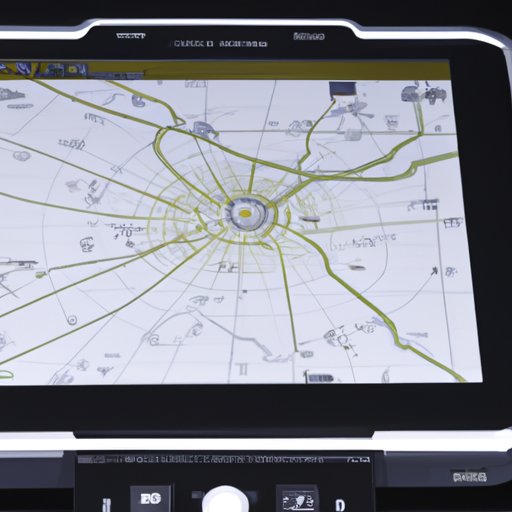Introduction
Global Positioning System (GPS) technology is used in many aspects of our lives to determine location, provide directions, and track movement. But what is GPS and how does it work? This article will explore the basics of GPS technology, its uses in everyday life, and its impacts on society.

Exploring the Basics of GPS Technology
GPS stands for Global Positioning System, a worldwide network of satellites that transmit precise information about their locations in space. The GPS system was developed by the US Department of Defense in the 1970s to enable military personnel and intelligence agencies to accurately pinpoint their location anywhere in the world. Today, the system is available to everyone and is widely used for commercial, recreational, and scientific purposes.
At its core, GPS technology utilizes radio signals from satellites in orbit around the Earth. These signals are picked up by receivers located on the ground, which then calculate the exact position of the receiver. The process works by measuring the time difference between when a signal is sent from a satellite and when it is received by the receiver. This time difference can then be used to calculate the distance from each satellite, allowing the receiver to determine its exact position.
The science behind GPS navigation is quite complex, but essentially it relies on a technique called trilateration. Trilateration involves measuring the distance between three points, or satellites, and then using those distances to calculate the location of the receiver. This process is made possible by the use of advanced mathematical equations and algorithms that allow the receiver to calculate its position with a high degree of accuracy.
How GPS Systems are Used in Everyday Life
GPS systems are used in a variety of ways in everyday life. They are most commonly used for navigation, allowing users to get directions to their destination. GPS systems are also used in cars to track vehicle movements and in cell phones to locate people. In addition, GPS technology is used in agriculture, surveying, and other industries.
The components of a GPS system include a receiver, antenna, and processor. The receiver picks up radio signals from satellites and processes them to determine the user’s location. The antenna receives the signals and sends them to the receiver. The processor then interprets the data and calculates the user’s position. The processor may also be connected to a display device, such as a computer or smartphone, which can be used to view the location on a map.
GPS technology has many benefits, including its ability to provide accurate information about location and direction. However, there are also some limitations to GPS technology. For example, GPS systems can be unreliable in areas with poor satellite reception, such as dense forests or deep canyons. Additionally, GPS signals can be blocked or disrupted by objects such as tall buildings or mountains.
The Global Positioning System’s Impact on Society
GPS technology has had a profound impact on modern society. It has enabled us to navigate more easily and safely, allowing us to find our way to unfamiliar places with greater ease. GPS technology has also revolutionized the transportation industry, making it easier for companies to track shipments and vehicles. In addition, GPS technology has been used for a variety of scientific applications, such as tracking wildlife and monitoring climate change.
The potential implications of GPS technology are vast. GPS-enabled devices could be used to monitor the movements of individuals, raising concerns about privacy. Moreover, GPS could be used to control autonomous vehicles, enabling them to navigate without human intervention. The development of GPS technology has been an exciting advancement, and its future potential is limitless.
Conclusion
GPS technology is a powerful tool that is used in many aspects of our lives. This article has explored the basics of GPS technology, its uses in everyday life, and its potential implications for society. Hopefully, this article has provided a helpful overview of how GPS works and encouraged readers to explore more about this fascinating technology.
(Note: Is this article not meeting your expectations? Do you have knowledge or insights to share? Unlock new opportunities and expand your reach by joining our authors team. Click Registration to join us and share your expertise with our readers.)
